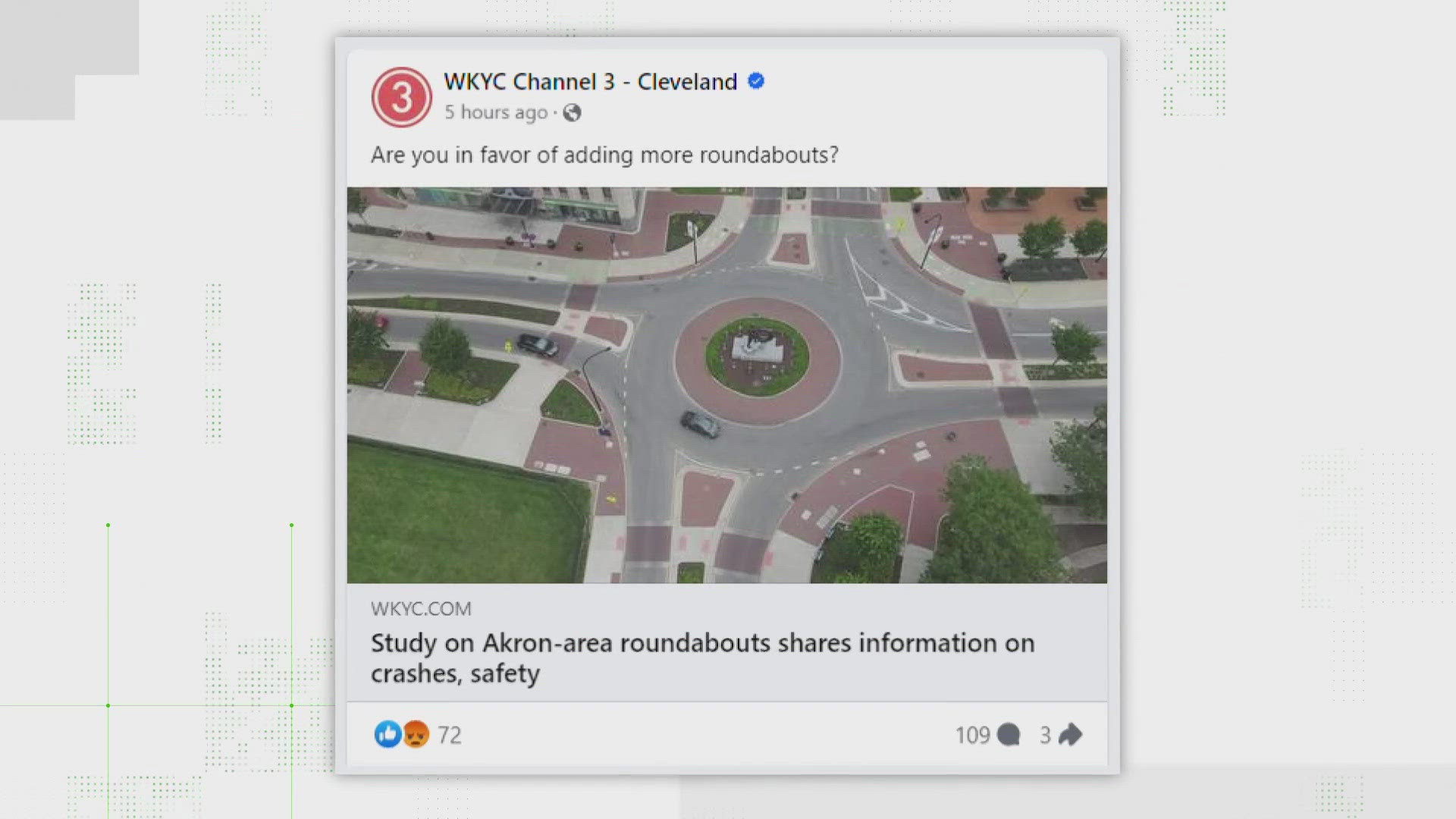CLEVELAND — The city of Akron has released a study on roundabouts, and it’s got people talking.
When we shared a post on the WKYC Facebook page asking for opinions on whether roundabouts should be more common, we saw a lot of claims being made in the comments.
Today, we VERIFY what's true and what's false from the comments on that post.
CLAIM 1
One user claims roundabouts significantly lower emissions, making them better for the environment than traffic lights.
SOURCE
- The Insurance Institute for Highway Safety (IIHS)
EXPLANATION
The Insurance Institute for Highway Safety has compiled studies that show that roundabouts reduce vehicle emissions because they reduce fuel consumption. The IIHS cited the following data showing that impact:
"Installing roundabouts in place of traffic signals or stop signs has been found to reduce carbon monoxide emissions by 15%-45%, nitrous oxide emissions by 21%-44%, carbon dioxide emissions by 23%-34% and hydrocarbon emissions by 0%-40% (Hu et al., 2014; Várhelyi, 2002)"
ANSWER
So we can VERIFY that it's true that roundabouts are better for the environment.
CLAIM 2
Another commenter claims that roundabouts cut out their wait time at stop lights, making their drive faster.
SOURCE
- The IIHS
EXPLANATION
We looked at traffic study results shared by the IIHS covering six states. While most showed reduced drive time, there was at least one instance where intersection delays increased. A study from the state of Washington showed the following:
"Overall intersections delays increased (12% and 22%), due to slightly longer delays on the major approaches as vehicles slowed to enter the roundabouts."
ANSWER
Based on the study results shared by the IIHS, the claim that roundabouts cut down drive time is unclear. There are just too many variables to be able to VERIFY that this is true in all scenarios with roundabouts.
CLAIM 3
Lastly, another user claims that roundabouts lead to more crashes.
SOURCE
- Ohio Department of Transportation
- Federal Highway Administration
EXPLANATION
The Ohio Department of Transportation cites studies by the Federal Highway Administration that show when roundabouts replace two-way stops and traffic lights, the number of crashes at those intersections go down significantly. Here are those figures:
"Studies by the Federal Highway Administration (FHWA) show that roundabouts achieve a 44% reduction in crashes and reduce serious injury and deadly crashes by nearly 90% at two-way stop intersections. When roundabouts replace a traffic signal, FHWA found a 48% reduction in crashes and nearly 80% drop in serious injury and deadly crashes."
ANSWER
So we can VERIFY that it's false to say that roundabouts lead to more crashes. The exact opposite is actually true, as roundabouts reduce crashes and serious injury.

